Do you leave the shaded areas in your garden bare while planting? If yes, you are not alone.
Three seasons ago, I discovered the beauty of shade gardening. Before then, I would leave bare patches under the shade in my kitchen garden and yard when I was planting.
And that is how I missed the delicious fruits, roots, and vegetables that thrive in the shade.
While it is true that many vegetables and herbs thrive in sunlight with plenty of moisture, others do well in shade and partial shade.

You can indeed grow and enjoy fresh greens from your balcony or yard that receives limited sunlight.
Shade-tolerant plants will save you expenses on kitchen groceries in addition to bountiful harvests for commercial purposes.
Explore eleven shade-loving edible plants for your garden in this post. These plants will not only add flavor to your meals but also enhance the beauty of your home and garden.
Table of Contents
Vegetables
Vegetables have almost all the essential nutrients for your body. These nutrients include vitamins, calories, proteins, water, and minerals, such as calcium and iron.
You can enjoy the following varieties that do well in the shaded areas of your yard.
1. Arugula
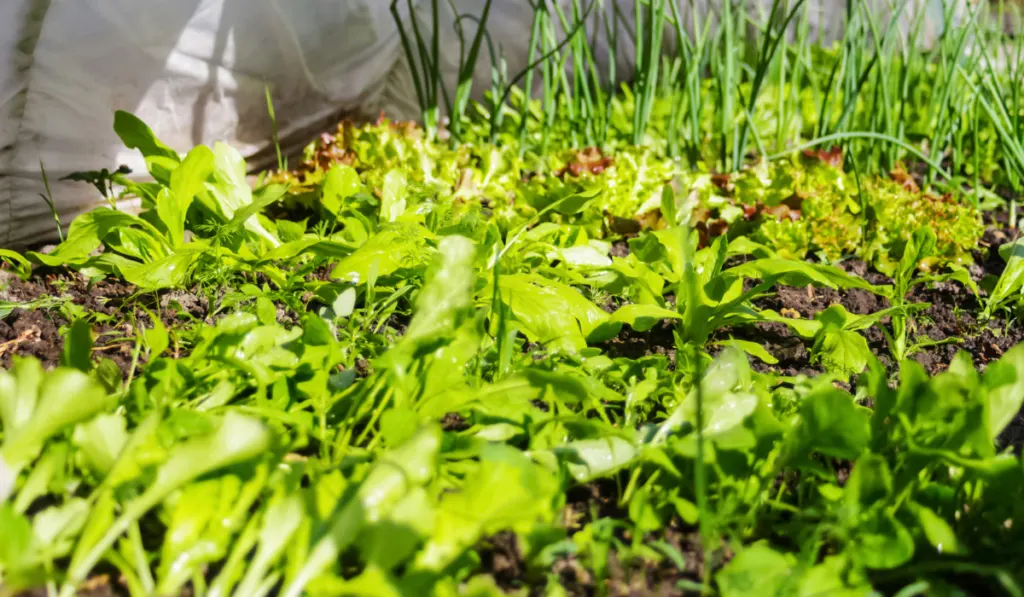
Arugula is a green leafy vegetable crop that thrives in the cold. Growing it in the shade extends its harvest as the weather warms up.
You can plant arugula seeds directly in the soil at the beginning of fall or spring. Although arugula requires sunlight, it does well in partial shade.
You can harvest this pepper-flavored vegetable in two stages:
- at the baby stage (after 20 days)
- at maturity (at 40 days)
Harvesting involves cutting the outer leaves when they are at least 2 inches long. This vegetable is great for salads and making soup.
‘Wild Rocky’, ‘Dragons Tongue’, and ‘Salad Rocket’ are common arugula varieties.
2. Asparagus

I love growing asparagus because it tolerates both full sunlight and partial shade. This means you can grow asparagus throughout the year.
You can plant asparagus seeds directly in the soil during spring and fall. If you want it to mature faster, you should go for 1- to 2-year-old roots.
Although this vegetable thrives in full sun, it also does well in partial shade. This makes it ideal to grow in
- your kitchen garden
- sacks on your balcony
- large-scale in your yard
Being a perennial crop, asparagus is ready for harvest in three years. You should harvest spears that are 6 inches high in the first harvesting year for two weeks.
The second harvest in two years can last for 3 weeks. Thereafter, the crop establishes well in the soil and matures fully at three years.
At maturity, you can harvest asparagus for 4 to 6 weeks.
‘Mary Washington’, ‘Pacific Purple’, and ‘Jersey Knight’ are the common asparagus varieties that do well in shade.
3. Beets

Beets are a popular leaf and root vegetable crop. The crop does well in cool weather and tolerates partial shade.
Spring and fall are the ideal seasons for growing beets. Beetroots thrive in sunlight but are usually smaller in partial shade.
Beetroot greens do well in partial shade and are tastier. You can harvest them after 30 days.
The roots take longer to mature and will be ready in 60 days. Mature beetroots should be about 2 inches in diameter.
Beetroot greens are useful for
- salads
- soups
- sauteing
You can roast or boil the roots. Large commercial firms can beetroots to increase their shelf life.
‘Touchstone Gold’ and ‘Detroit Dark Red’ are among the common beet varieties.
4. Broccoli

Broccoli grows well in a relatively cool environment. Therefore, you should plant it in partial shade rather than full sun.
You can plant seeds indoors and transplant them to areas with partial shade. Although the crop thrives in sunlight, it can bloom before harvest, making the flowers bitter.
Growing broccoli in the shade slows down blooming, making the vegetable edible for longer.
You should harvest broccoli heads when they have firm buds to allow more buds to grow for another harvest.
Broccoli matures after 50 to 70 days.
‘Belstar’, ‘Santee’, and ‘Green Comet’ are among popular broccoli varieties.
5. Mushrooms
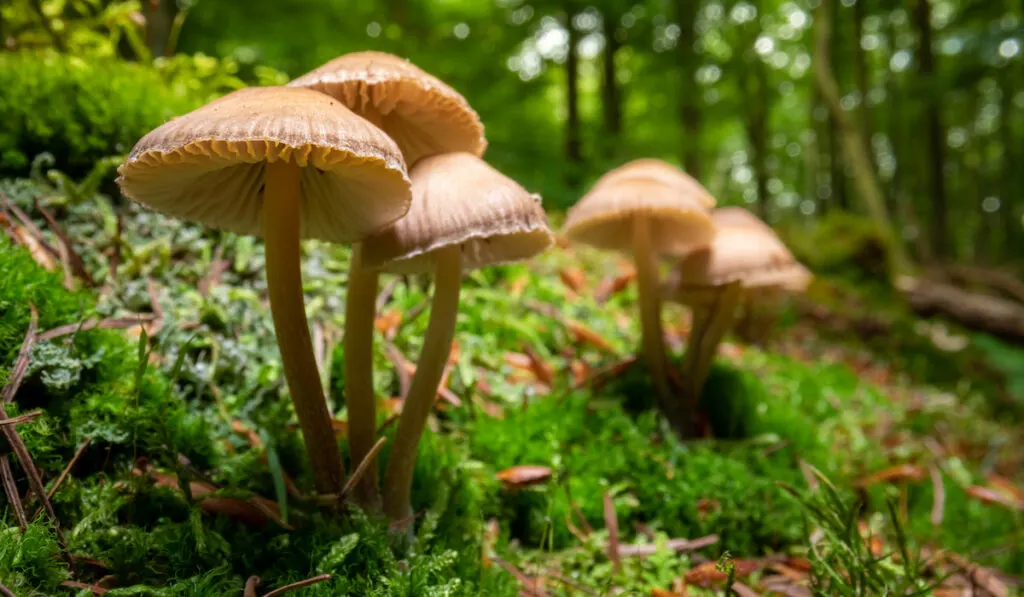
The best place for growing mushrooms is in the shade. If you have an area in your garden that doesn’t get a lot of sunlight, you may consider growing mushrooms.
Shiitake, oyster, and wine cap are common mushroom varieties to grow.
You need wooden logs to host these edible fungi.
Hardwoods such as maple and beech work well. You also need a lot of water since mushrooms thrive in moisture.
You can learn more about growing mushrooms here.
Besides the low calorie and protein supply for your body, mushrooms supply antioxidants.
Herbs
Herbs are known for their hardy nature. They are rich in vitamins, minerals, and other nutrients.
If you want to grow edible shade-loving herbs to add fragrance and color to your plate, consider the following crops.
6. Chives
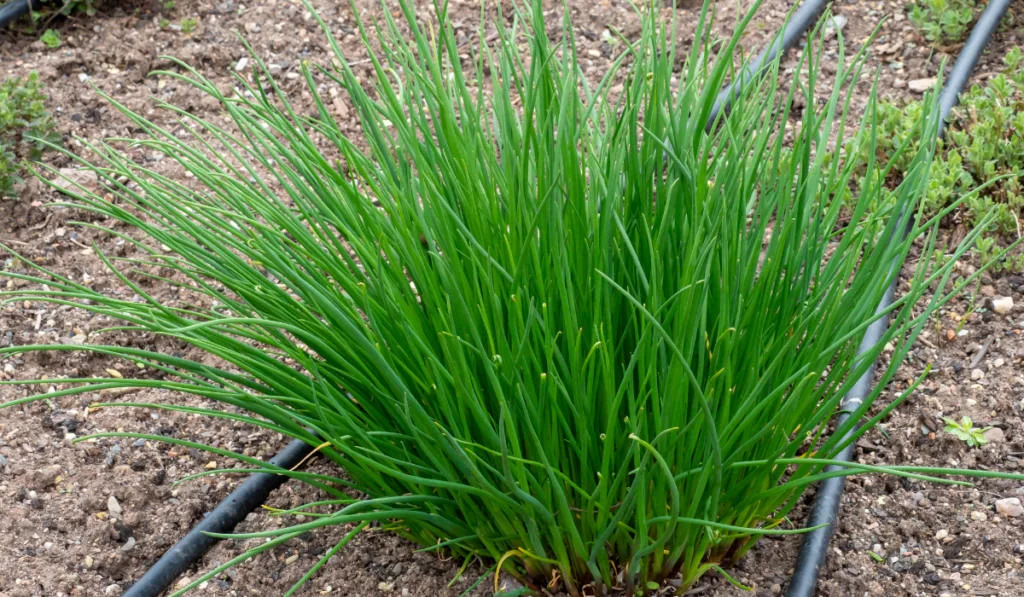
Chives thrive in partial shade. The soil should have enough moisture but not be soggy.
Early spring and mid-fall are the ideal growing seasons for chive plants.
You can plant seeds or divisions from already mature plants.
If you are planting clumps (divisions), ensure they have 5 to 10 bulbs for quick growth. Seeds germinate and thrive faster indoors.
Plant the seeds about 0.25 inches deep in the soil and water them well. The ideal temperature for germination is 60°F to 70°F in a dark spot.
After germination, allow the seeds to sprout before you transfer them to light. It takes chives 30 to 90 days to mature.
You can harvest them by cutting the shoot halfway. Their flowers are also edible. Chefs use them to decorate other dishes.
Common chives, Chinese chives, and ‘Siberian’ are the common chive varieties to grow in the shade.
7. Parsley
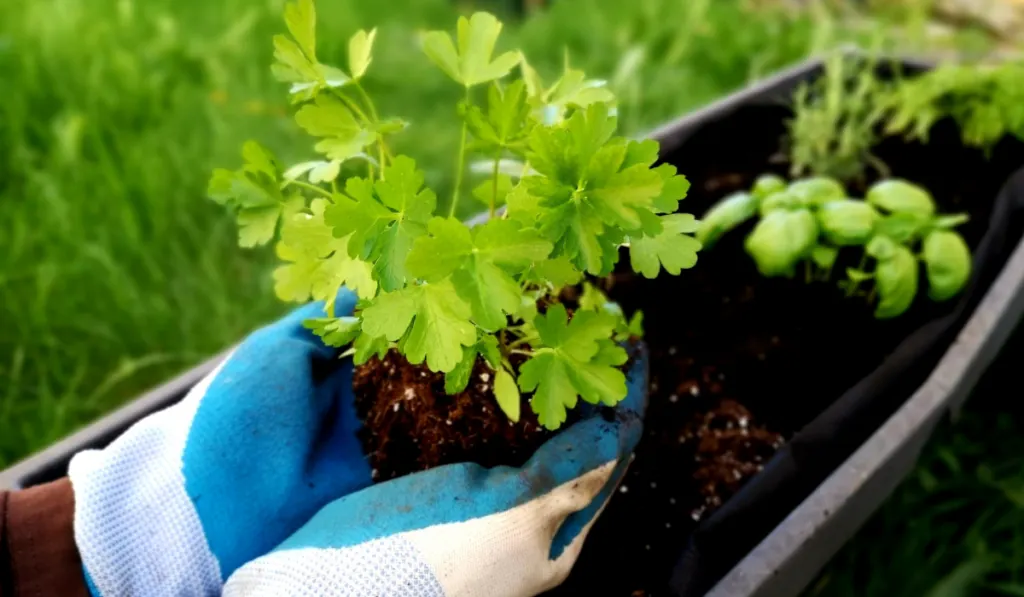
Parsley is a green herb with beautiful foliage. You can use the leaves and stems in different recipes.
Parsley grows well in cold weather.
Being frost-proof, parsley grows through winter and gains more flavor during that season.
You can grow parsley indoors or in the shade as the weather gets warmer. The herbs are ready for harvest after 70 to 90 days.
Although the plant does well in full sunlight, partial shade during summer is essential. Keep your garden soil moist and well-drained for better yields.
Curley parsley, flat-leaf parsley, and Japanese parsley are the common varieties of this herb.
8. Golden Oregano
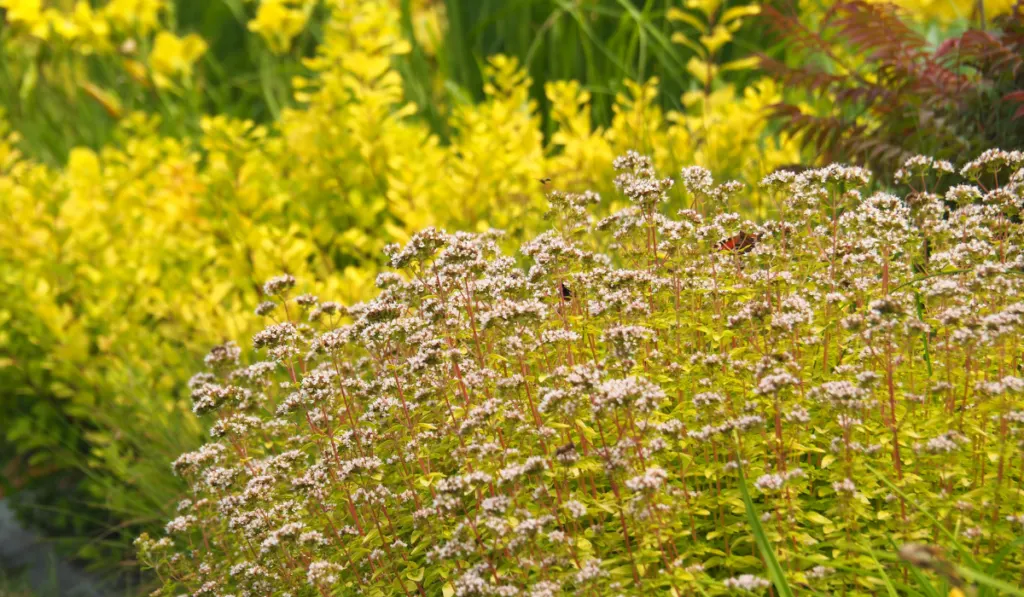
Golden oregano is a shade-loving herb. It thrives in low temperatures, making shade necessary, especially in tropical climates.
This crop requires about 6 hours of direct sunlight, although its leaves may burn when the sun is too hot.
Before you plant oregano, ensure the soil is well-drained and fertile. Applying pesticides is also recommended because the crop is prone to aphids and spider mite attacks.
Oregano is popular in pots and raised beds.
You can start harvesting oregano when it’s four inches tall. When ready for harvesting, pick the leaves regularly to allow for more to sprout.
Fruits
Fruits are important in your diet. They supply your body with essential vitamins, minerals, and fiber.
A fruit-rich diet protects your body against diabetes, heart disease, cancer, and other health problems.
You can grow the following fruits in the shade and enjoy their nutritional and health benefits right from your garden.
9. Blueberries
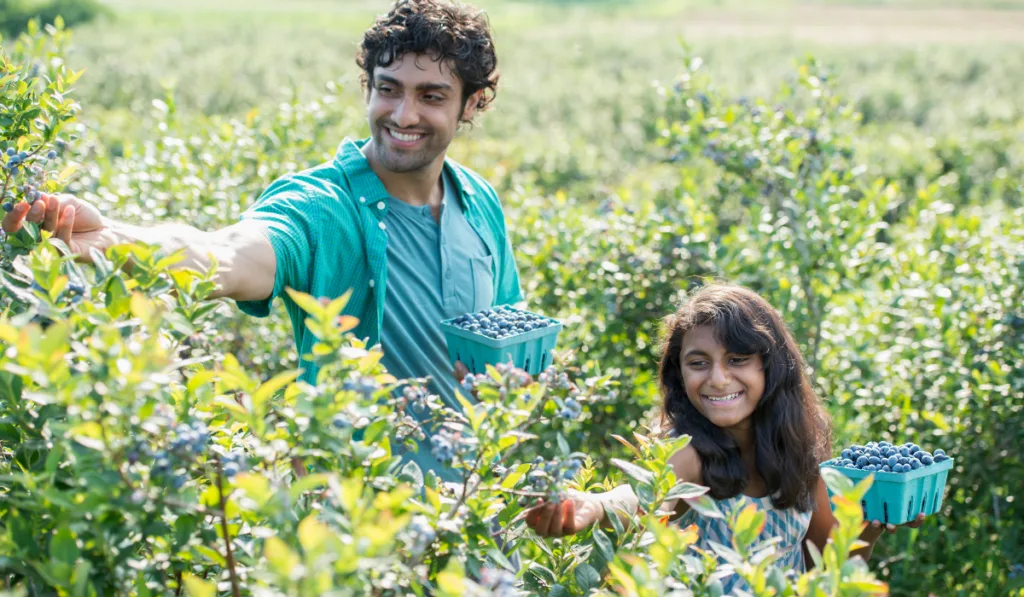
Blueberries are a rich source of proteins, calories, carbohydrates, sugar, and fiber. They thrive in sunlight but have good shade tolerance.
The best time to plant blueberries is during spring.
But they also grow well in late fall.
The soil should be acidic and non-porous to hold the plant’s shallow roots. Since it is not strongly anchored in the soil, you should protect it from strong winds.
Plant the berry bush about an inch below the soil surface and provide 1 to 2 inches of water per week.
You can enjoy your first harvest after 2 to 3 years. The harvest increases after five years.
10. Raspberries

Raspberries are more productive when you grow them in a shady spot. Some raspberry varieties fruit in fall and others in summer.
To enjoy their fruits throughout the year, grow both varieties.
Fall berries produce fruit in the same year of planting, while summer berries produce fruit after one year.
In addition to keeping your soil fertile, even spacing ensures maximum productivity. Keep the canes about two inches apart.
The ideal space between rows is about 30 inches. Mulching keeps the soil moist and smothers weeds to keep your canes healthy.
11. Elderberries
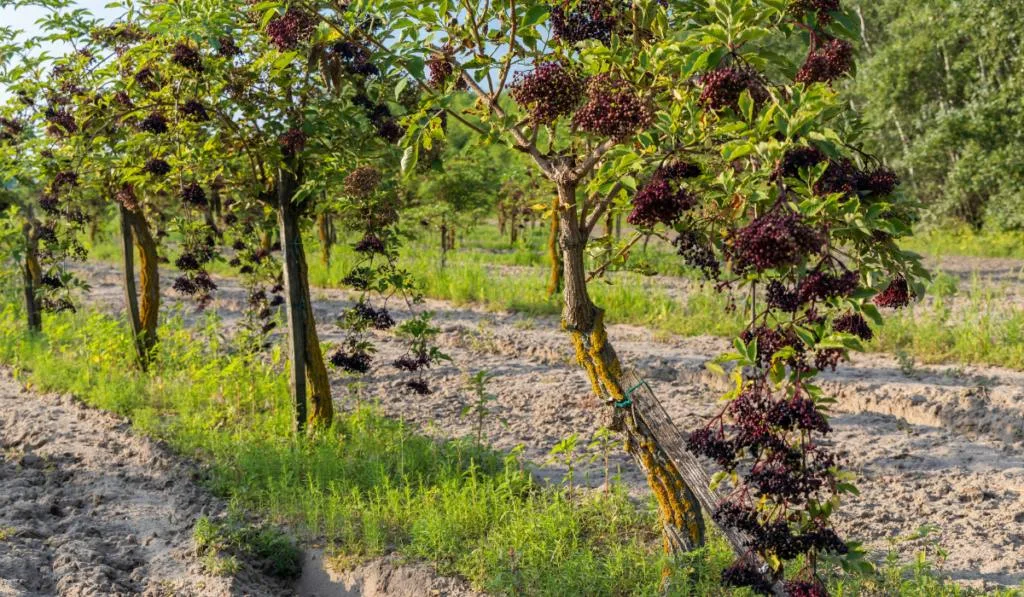
Elderberries thrive in full sun, but you can also grow them in partial shade.
The crop does well in moist fertile soils with a pH of 5.5 to 6.0.
Early spring is the ideal time to plant elderberries. Good garden practices such as weeding and pruning keep elderberries productive and attractive.
Wrapping Up
Many edible plants thrive in the shade. Instead of leaving bare the shaded patches in your garden, grab your favorite edible plant from the list above and enjoy a bountiful harvest this coming season.
Note that shade-loving crops require adequate nutrients and care. Therefore, tend to them as you do to other crops.
Resources
- https://growagoodlife.com/vegetables-that-grow-in-shade/
- https://www.treehugger.com/can-you-grow-vegetables-in-the-shade-4863395
- https://extension.umn.edu/vegetables/growing-chives
- https://www.gardeningknowhow.com/edible/herbs/hgen/shade-tolerant-herbs-for-your-herb-garden.htm
- https://bonnieplants.com/blogs/how-to-grow/growing-parsley
- https://bonnieplants.com/blogs/how-to-grow/growing-parsley
- https://www.plantmegreen.com/blogs/news/things-to-know-about-planting-blueberry-bushes-in-your-yard
- https://www.gardenersworld.com/plants/10-best-fruit-crops-for-shade/
- https://extension.unh.edu/blog/2020/08/what-best-way-grow-elderberries
- https://gardentherapy.ca/growing-specialty-mushrooms/
